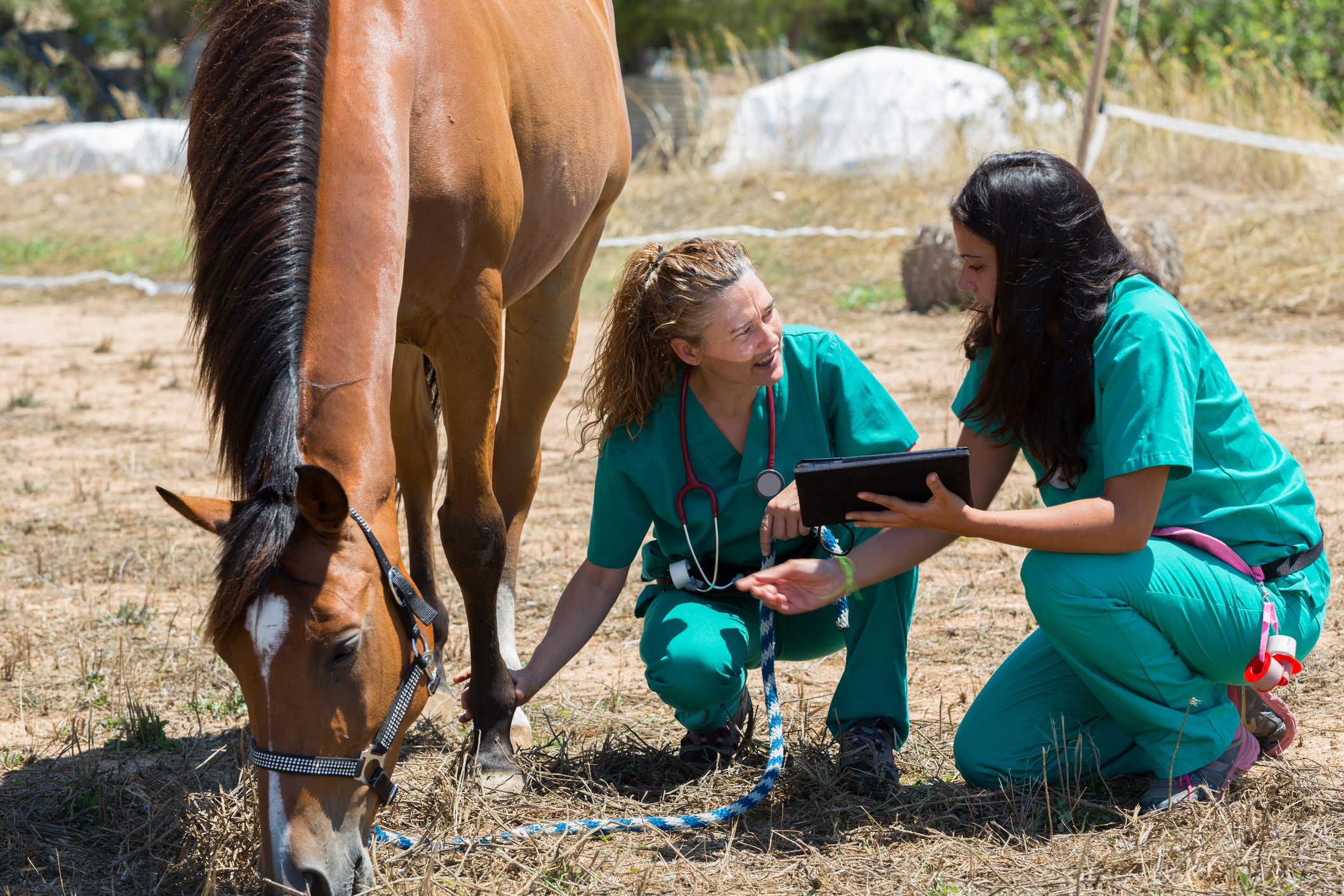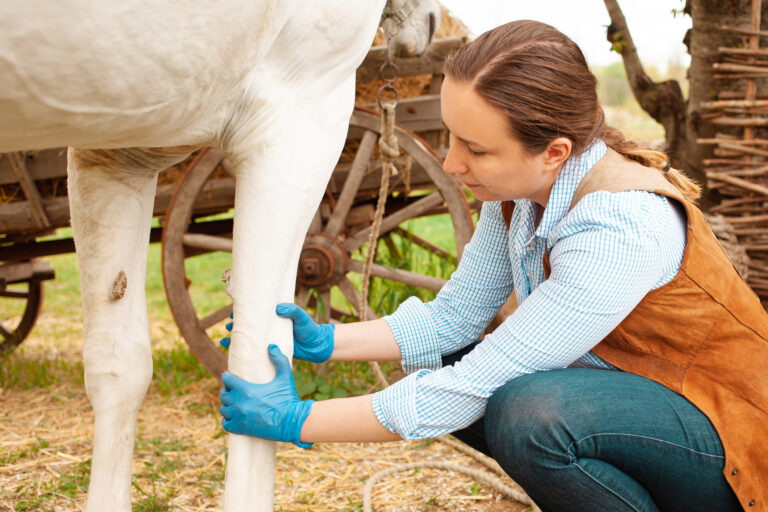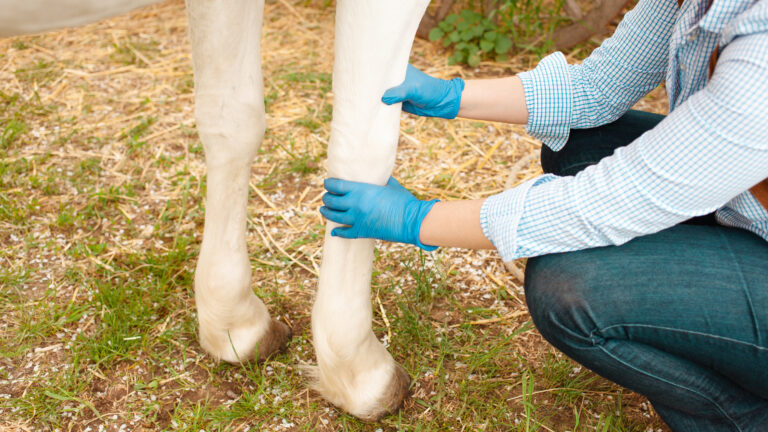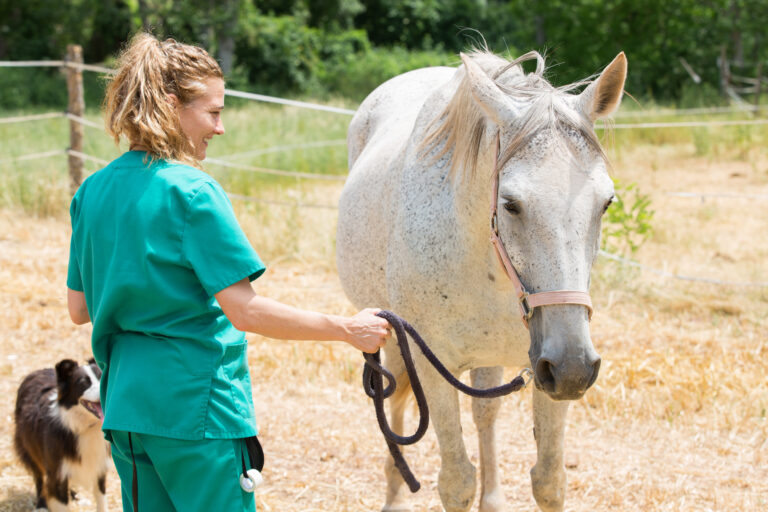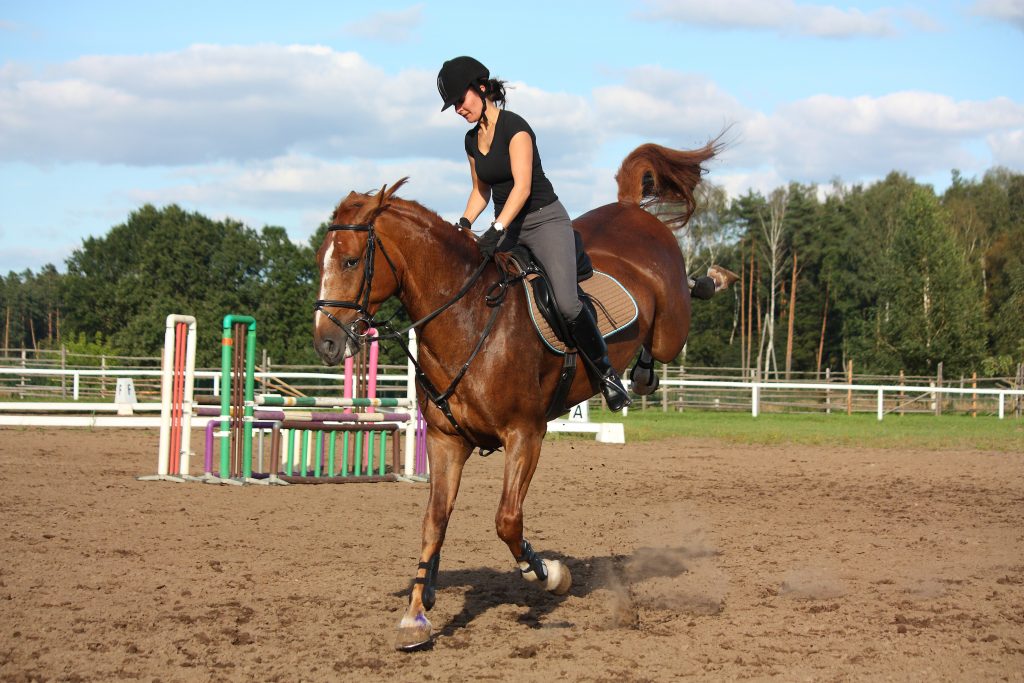Lameness in Horses: How to Recognise, Assess, and Manage It Effectively for Better Equine Health
Lameness in horses can be a serious issue that affects their performance and well-being. Knowing how to recognise it early is crucial because even subtle signs of discomfort can signal a problem. You can identify lameness by watching your horse’s gait carefully and noting any irregular movement, limping, or uneven weight-bearing.
Assessing lameness involves more than just spotting a limp. You need to observe your horse in motion, sometimes with the help of a professional, to determine which limb is affected and how severe the problem is. Managing lameness often requires a combination of rest, treatment, and sometimes changes in shoeing or exercise routines to help your horse recover and avoid further injury.
Understanding how to spot and deal with lameness helps you protect your horse’s health and maintain its comfort and performance. With the right approach, you can address the issue efficiently and keep your horse fit and sound.
Key Takeways
- Early signs of lameness are often subtle and need close observation.
- Accurate assessment helps identify the cause and affected limb.
- Proper management can improve recovery and prevent recurring problems.
Understanding Lameness in Horses
Lameness affects a horse’s ability to move normally and can come from problems in different parts of their body. Knowing the causes, common issues, and how to reduce risks helps you keep your horse sound and comfortable.
Definition and Causes of Equine Lameness
Lameness means your horse is limping or showing uneven movement because of pain or damage in the limbs or feet. It often comes from problems in the bones, joints, muscles, tendons, or ligaments.
You will often see lameness in the forelimbs or hindlimbs, depending on where the injury or condition is. The horse may not want to bear weight or change its gait due to pain.
Some causes are obvious, like wounds or swelling. Others can be more complex, such as internal joint inflammation or nerve issues. Understanding basic equine anatomy helps you recognise where problems might be.
Common Lameness Conditions
Many horses suffer from specific lameness issues that you should know about. Some common conditions include:
- Laminitis: A serious, painful condition affecting the hoof’s internal structure. Your horse might shift weight and show difficulty moving.
- Tendon injuries: Damage in tendons causes swelling and heat, often in the lower legs.
- Joint problems: Arthritis or synovitis can make joints stiff and painful.
- Foot abscesses: Sudden, severe lameness can come from infection inside the hoof.
You can observe changes in gait, uneven hoof landing, or reluctance to move to spot problems early. A clear lameness examination by a vet is often needed to pinpoint the exact cause.
Risk Factors and Prevention
Certain factors increase the chance of lameness in your horse. Poor hoof care, bad conformation, and repetitive hard work can stress limbs and joints over time. You should regularly check your horse’s limbs for swelling, heat, or soreness.
Proper shoeing and balanced footing reduce strain on tendons and joints. Avoid sudden changes in exercise or workload to prevent injury.
You can lower risk by managing weight and diet carefully, especially to prevent laminitis. Keeping your horse fit and balanced helps support soundness and reduces the chance of long-term lameness.
For more detailed guidance on assessing lame horses, visit this page on examination for lameness.
Signs and Symptoms of Lameness
When a horse is lame, you will see specific changes in how it moves and behaves. These changes can include unusual walking patterns, differences in how the horse holds its head or hips, and physical signs like increased heat or pulse in certain areas. Paying close attention to these signs helps you spot lameness early and take action.
Recognising Early Clinical Signs
Early signs of lameness may be subtle. You might notice your horse unwilling to bear weight evenly on all legs or hesitating to move. Sometimes, a horse shifts weight between limbs or stands unevenly.
Look for swelling, heat, or tenderness in joints, tendons, or hooves. Your horse might seem reluctant to go forward or be less willing to work. Changes in behaviour like increased irritability during grooming or tacking can also point to discomfort.
Observing your horse closely during normal activities helps you catch these early clinical signs before the problem worsens.
Gait Abnormalities
Lameness usually affects the horse’s gait or walk pattern. You might see uneven stride lengths or changes in the rhythm of steps. Sometimes the horse might shorten its stride on the lame limb or drag its toe.
Common gait abnormalities include shortened stride, stumbling, or irregular footfalls. Watch your horse trot in a straight line on a flat surface to identify these issues clearly.
If the horse favours one leg, it may shift its weight to other limbs. These changes in gait are often one of the first clear signs of lameness you can detect visually.
Head Nod and Hip Hike
Certain movements signal which leg may be lame. If the horse nods its head down when the lame front leg hits the ground, this is called a head nod. It helps to reduce weight on the sore leg.
For hind leg lameness, look for a hip hike—an upward movement of the hip when the lame leg pushes off. This is a way the horse reduces discomfort by altering its pelvis movement.
These signs are subtle but important. You can see them best when your horse is trotting, as the rhythm and movement make them easier to spot.
Digital Pulse and Palpation
Checking the digital pulse near the horse’s hoof can highlight inflammation. A stronger or bounding pulse usually means pain or injury in that area.
Palpation means feeling the limbs for heat, swelling, or sensitive spots. You can press gently around joints, tendons, and hooves to detect tenderness or thickening.
Regularly feeling the digital pulse and palpating the limbs helps you identify early lameness signs before major issues develop. This hands-on check complements your visual assessment of gait and posture.
For tools and techniques used in clinical evaluation, see more about diagnosis of lameness.
Lameness Examination Procedures
To identify lameness in horses, you need to gather detailed information and carry out a thorough examination. Careful observation and systematic checks help locate the source of pain or dysfunction. The process involves studying the horse’s history, inspecting its physical condition, and analysing its movement in detail.
Taking a Detailed Medical History
Start by asking about your horse’s background and any recent changes in behaviour or performance. Find out when the lameness began and whether it was sudden or gradual. Note any previous injuries, treatments, or illnesses that could affect the limbs or muscles.
Details about your horse’s workload, shoeing schedule, and footing conditions can provide important clues. Record any treatments already used and observe their effects. This history helps you and your equine veterinarian focus on likely causes without overlooking key factors.
Physical Examination and Observation
Begin the physical examination with a hands-on check of your horse’s limbs, joints, and muscles. Look for heat, swelling, wounds, or sensitivity. Palpate areas for pain or abnormal heat, and check tendons and ligaments for thickening or irregularities.
Also assess your horse’s posture, stance, and conformation. Poor conformation can increase the risk of lameness or contribute to existing problems. Use a systematic approach to compare limbs and notice any uneven weight bearing or muscle loss.
Trot Up and Movement Analysis
The trot up is critical to observe how your horse moves. You should watch your horse move on a straight, hard surface to identify any irregularities in stride or rhythm. Pay attention to head and hip movement, limb placement, and symmetry.
You may need to assess movement on different surfaces or under different conditions to detect subtle lameness. Your equine veterinarian might use markers or video to compare strides during a lameness examination. This helps pinpoint the exact limb or joint causing the issue and guides further diagnostic steps.
For more details on these examination techniques, see lameness examination procedures by veterinary experts.
Diagnostic Tools and Techniques
To find the cause of lameness in your horse, you need to use specific tests and imaging methods. These tools help pinpoint the exact location and severity of the problem. Each technique offers unique information that guides treatment decisions.
Flexion Tests and Manipulations
Flexion tests help you identify joint or soft tissue pain. You apply pressure to a specific joint or limb by bending it for 30 to 60 seconds. After releasing, you immediately observe the horse’s movement for short-term changes in lameness.
If lameness worsens after flexion, it indicates pain or inflammation in that joint or nearby structures. You should perform these tests carefully, comparing both limbs to spot differences.
Manipulations may include moving the limb or applying pressure to muscles and tendons. These help reveal soreness that might not be obvious during the normal gait.
Nerve Blocks and Joint Blocks
Nerve blocks involve injecting local anaesthetic to numb certain nerve areas. This stops pain signals from that part of the leg. If lameness disappears after the block, you know the problem lies below the numbed area.
Joint blocks work similarly but target specific joints instead of nerves. Both techniques are precise tools to locate pain sources, especially when flexion tests are unclear.
You should apply blocks stepwise, starting farthest from the hoof and moving up the leg. This approach helps you narrow down the affected area safely and effectively.
Radiographs and Radiography
Radiographs, or x-rays, allow you to see bone structures inside the limb. They show fractures, arthritis, bone spurs, or other changes causing lameness. Radiography is a key diagnostic tool for detecting bone-related problems.
You place the x-ray plate near the suspected area and take multiple images from different angles. This gives a detailed view to identify subtle or hidden issues.
Regular communication with your farrier is important, as hoof balance and shoeing influence lameness. Radiographs can help check hoof alignment and shoe fit as part of the management plan. For a deeper understanding, visit diagnostic tools and techniques for equine lameness.
Advanced Imaging and Assessment Methods
You will find several imaging methods useful for pinpointing lameness in horses. These techniques offer detailed views beyond basic radiography, helping you understand the exact cause of the problem. Each method has its strengths for identifying issues in soft tissue, bone, or circulation.
Ultrasonography and Ultrasound
Ultrasonography uses high-frequency sound waves to create images of tendons, ligaments, and muscles. It’s very helpful for diagnosing soft tissue injuries like tendonitis or ligament sprains.
You can perform ultrasound in a stable setting with portable devices. It shows tears, inflammation, and changes in tissue structure clearly. The technique is non-invasive and safe, allowing you to monitor healing over time.
However, ultrasound has limits. It does not show bone damage or changes inside joints well. Its accuracy depends on your skill in positioning the probe and reading images. Using ultrasonography along with other methods offers the best results.
Nuclear Scintigraphy and Bone Scan
Nuclear scintigraphy, or bone scanning, uses a small amount of radioactive material injected into the horse. This material collects in areas with increased bone activity or inflammation.
You will see “hot spots” where there is bone remodeling from injuries like fractures or infections. This scan is especially useful in cases where lameness is hard to localise by clinical exam alone.
The scan takes several hours to complete and requires specialised equipment. It offers a whole-body overview, helping you find hidden injuries. Keep in mind that soft tissue injuries show less clearly with this method.
MRI and CT Scans
Magnetic resonance imaging (MRI) creates detailed images of both soft tissues and bones without radiation exposure. It is very effective for diagnosing deep joint, bone, and soft tissue problems.
MRI allows you to see internal injuries such as cartilage damage, bone bruising, or ligament tears that x-rays cannot show. However, MRI machines often require general anaesthesia, limiting use in some cases.
Computed tomography (CT) uses x-rays to produce cross-sectional images. CT excels at showing bone details, including fractures and complex joint issues. It works faster than MRI and is suitable for scanning the head, limbs, and spine.
Both MRI and CT offer three-dimensional views, improving your ability to plan treatment or surgery.
Thermography
Thermography measures surface temperature of the horse’s skin using an infrared camera. It highlights areas of heat caused by inflammation or increased blood flow.
You can use this technique as a quick, non-contact screening tool to detect potential lameness sources. Thermography is useful in early injury detection before swelling or lameness becomes obvious.
However, it only shows surface changes and is affected by environmental factors like weather or dirt. It does not provide images of structures inside the body but serves as a good initial assessment tool in your lameness examination.
Using these advanced methods alongside clinical evaluation improves your accuracy in diagnosing and managing lameness effectively. For more detail on these imaging techniques see Adams and Stashak’s lameness in horses.
Common Causes of Lameness
Lameness in horses often arises from specific physical damage or problems. You need to carefully check soft tissues, wounds, and hooves to pinpoint where the issue lies. Understanding the typical causes helps you take the right steps to manage it effectively.
Injuries to Tendons and Ligaments
Tendon and ligament injuries are common causes of lameness. The flexor tendons, which help bend the leg, and the suspensory ligaments, supporting the leg’s structure, are most often affected. These tissues can become strained, torn, or inflamed through overwork, falls, or sudden movements.
When your horse shows uneven gait or swelling along the leg, suspect tendon or ligament damage. You may notice heat or pain if you touch the affected area. Early rest and veterinary care are crucial to avoid worsening the injury. Proper diagnosis often requires specialist tools like ultrasound to see the extent of damage.
Abscesses and Infections
Abscesses develop when bacteria enter a wound or crack in the hoof. They cause intense pain and sudden swelling, making your horse lame. You might notice your horse lifting the foot or having a stronger pulse in the affected leg.
If an abscess drains, you will see pus and immediate relief in lameness. Treatment involves soaking the hoof and keeping it clean to promote drainage. Ignoring infections can lead to deeper tissue damage, so seek veterinary advice if swelling persists or your horse is very painful.
Hoof and Farriery Issues
Hoof problems are a leading cause of lameness. Poor hoof care or incorrect farriery can cause uneven wear, cracks, or bruising. If shoes do not fit properly, your horse may develop soreness or imbalance leading to lameness.
You should regularly inspect your horse’s hooves and work with a skilled farrier. Signs of hoof pain include uneven hoof wear, heat, or tenderness. Adjusting shoeing and maintaining clean, well-trimmed hooves help prevent many lameness problems related to farriery mistakes or neglect.
For more detailed information, see Adams and Stashak’s guide on lameness in horses.
Treatment and Management Strategies
Managing lameness in horses requires careful planning and combining different approaches. You need to consider the specific cause, severity, and the horse’s overall health to choose the best treatment and care.
Developing an Effective Treatment Plan
Your treatment plan should be based on a clear diagnosis. Start by identifying the exact source of lameness through examinations and tests. Once you know the problem, set realistic goals for recovery.
Include both short- and long-term steps. For example, initial rest or restricted movement may be necessary before more active therapies begin. Keep track of how your horse responds, and be ready to adjust the plan.
Communication between you, your vet, and any therapists is vital to ensure the plan stays effective. A well-organised approach improves the prognosis and helps prevent future problems.
Medication and Conventional Therapies
Medication often plays a key role in managing pain and inflammation. Non-steroidal anti-inflammatory drugs (NSAIDs) are commonly used to reduce discomfort.
You may also consider intra-articular therapies like platelet-rich plasma (PRP) or interleukin-1 receptor antagonist protein (IRAP). These treatments help promote healing and reduce joint inflammation.
For some cases, stem cell therapy can support tissue repair, but this depends on your horse’s condition and cost. Acupuncture is an alternative option that might help with pain relief.
Always follow your vet’s advice on dosages and treatment duration to avoid side effects or complications.
Supportive Care and Rehabilitation
Rehabilitation is key to a successful recovery. Controlled exercise, tailored to your horse’s needs, helps rebuild strength and mobility without causing more damage.
Supportive care includes proper shoeing, bandaging, and sometimes physiotherapy. These methods protect the injured limb while improving circulation and reducing swelling.
Create a daily routine that balances rest and activity. Use tools like cold therapy or hydrotherapy to reduce inflammation during early recovery stages.
Careful management during rehabilitation ensures your horse regains function safely and lowers the chance of re-injury. More details on managing these processes can be found in books about lameness in horses like this one.
Preventative Measures and Long-Term Care
Taking care of your horse’s feet and legs daily helps avoid many common causes of lameness. You need to watch for early signs and manage any issues quickly to protect long-term health.
Hoof Maintenance and Farrier Involvement
Your horse’s hooves need regular care to stay healthy. This means scheduled trimming or shoeing every 6 to 8 weeks. Proper balance in the hoof shape prevents uneven weight and strain on joints.
Always work with a skilled farrier who understands your horse’s specific needs. They will check for cracks, chips, or infections like thrush. Regular hoof cleaning removes debris and reduces risks of injury.
Key hoof care tips:
- Clean hooves daily with a hoof pick
- Schedule consistent farrier visits
- Watch for heat or swelling in the feet
- Address any hoof cracks immediately
Good hoof care supports soundness and reduces the chance of lameness caused by improper foot balance or damage.
Routine Monitoring and Soundness Evaluation
You should monitor your horse’s movement daily. Look for uneven gait, stiffness, or reluctance to move. These signs can indicate the start of a problem.
A regular soundness evaluation by a vet or professional allows early detection of issues. Monitoring includes watching your horse walk on different surfaces and checking limbs for heat or swelling.
Keep a simple checklist for daily use:
- Inspect legs for cuts, swelling or heat
- Watch for favouring a limb during walking or trotting
- Note any behavioural changes around exercise
Early action based on these observations can prevent minor problems from becoming serious lameness.
Orthopaedic Health and Early Intervention
Your horse’s limb joints and bones need attention, especially with age or heavy workloads. Orthopaedic problems like arthritis or straightness issues can cause chronic lameness if untreated.
Early intervention methods include physical therapy, controlled exercise, and medical treatments prescribed by your vet. Managing weight and avoiding uneven surfaces reduce strain on joints.
If you notice persistent stiffness or swelling, get a professional assessment quickly. Treatment focused on orthopaedics improves long-term mobility and comfort.
Orthopaedic care checklist:
- Maintain regular vet checks for joint health
- Use supportive shoeing as advised
- Provide rest and proper rehabilitation after injury
- Avoid overworking young or ageing horses
This approach protects your horse’s limbs and helps maintain a pain-free, sound condition. For detailed reviews on these measures, see assessments of long-term forelimb functionality.
Frequently Asked Questions
You can spot early signs of lameness by paying close attention to changes in your horse’s movement and behaviour. Proper rest, correct assessment methods, and knowing when treatment is needed are critical to managing lameness effectively.
What are the initial signs of lameness in equine front limbs?
Look for uneven weight bearing and a shortened stride in the front legs. Your horse may also show head nodding or limb favouring when walking or trotting.
Shifting weight or reluctance to move can also be early indicators.
Can a horse with minor limping continue to work or should it rest?
Minor limping often needs rest to prevent worsening. Continuing work without proper assessment may increase injury risk.
Consult a vet before deciding if light work is safe.
What are the most effective treatments for equine lameness?
Treatment depends on the cause but usually includes rest, anti-inflammatory medication, corrective shoeing, or physiotherapy.
More complex cases may require veterinary intervention, including joint injections or surgery.
When assessing a horse for lameness, which scale or method is most reliable?
The numerical lameness grading scale (from 0 to 5) is widely used for consistency. Video analysis and veterinarian clinical exams improve accuracy.
You can learn more about assessment approaches in this study on equine lameness recognition.
How can you tell if a horse’s hind legs are the source of lameness?
Watch for irregular stride length and uneven hip movement. Your horse may show a lowered pelvis or difficulty in transitions and turns.
Subtle signs like tail swishing or weight shifting can also signal hind limb issues.
Is euthanasia a necessary course of action for a lame horse?
Euthanasia is rarely the first option. Most lameness cases respond to treatment or management. It may only be considered when quality of life is severely compromised and pain cannot be controlled.

